Churches
Duomo
PIENZA
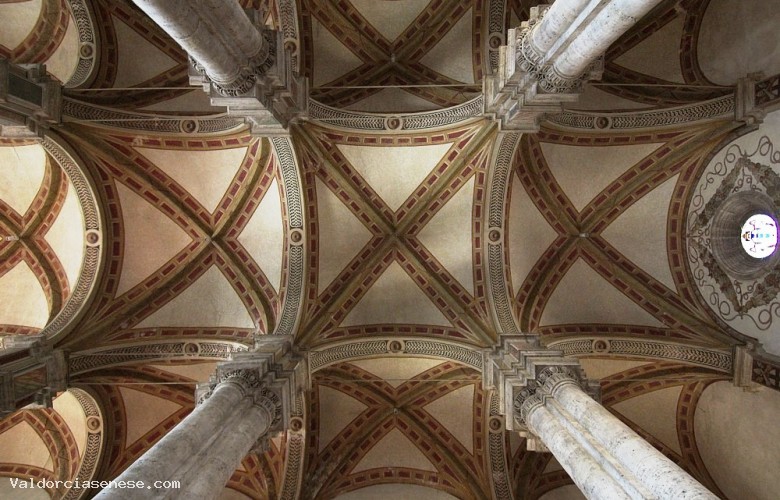
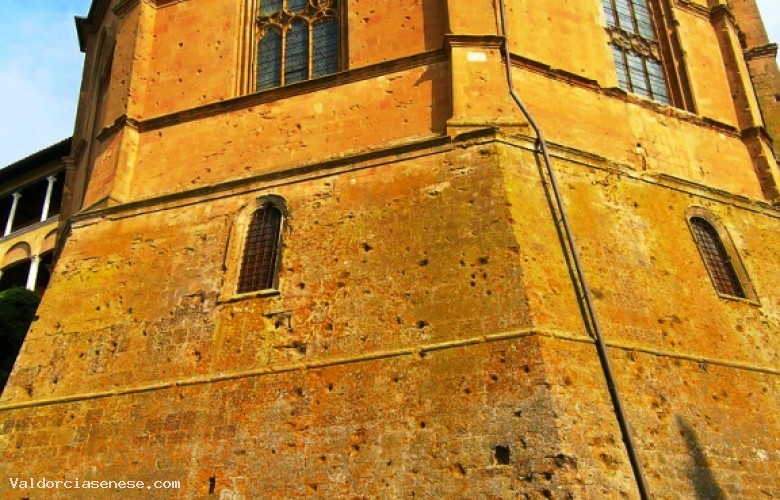
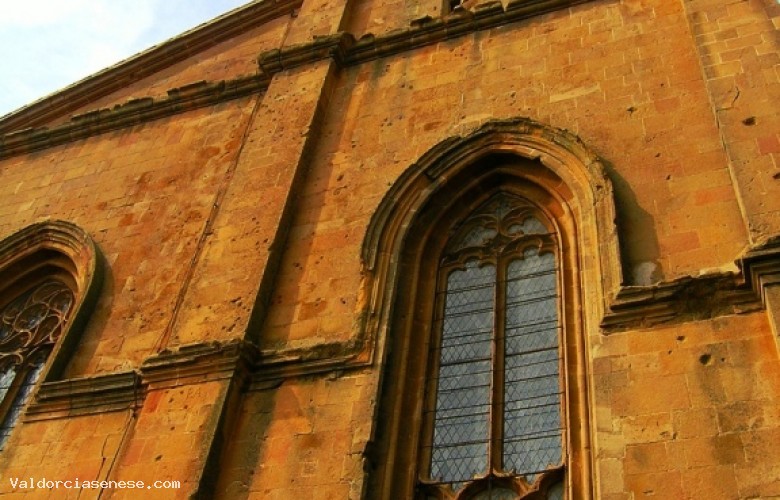
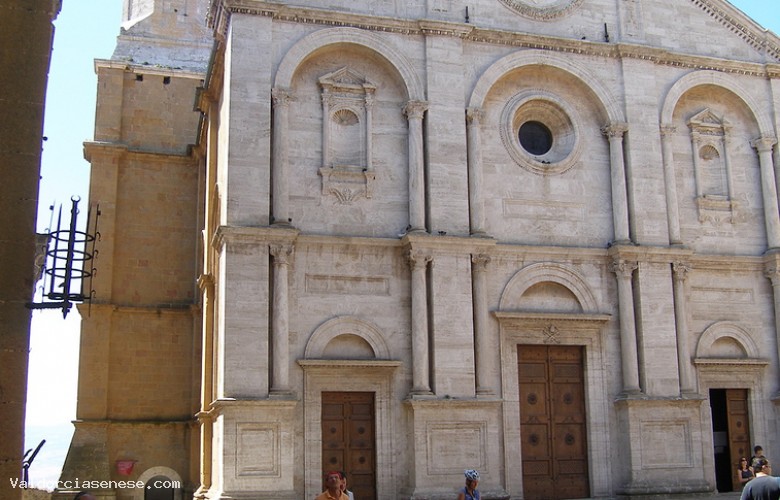
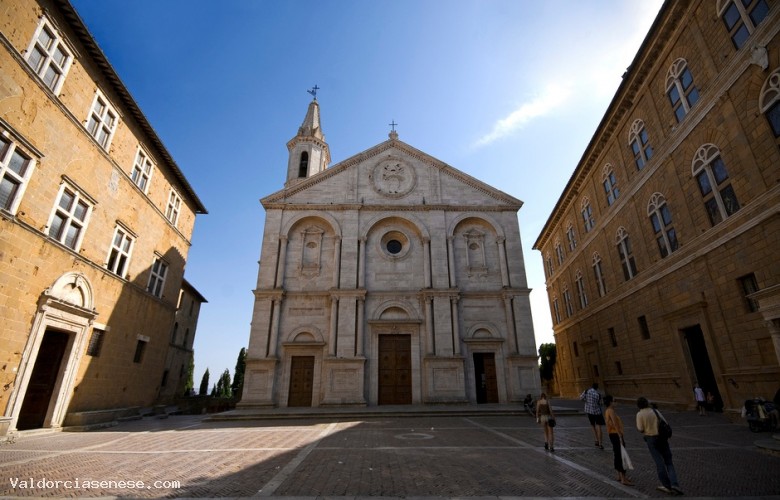
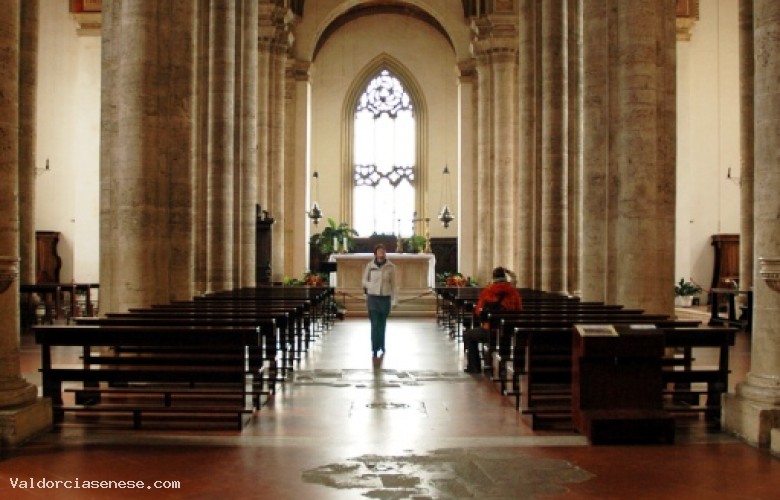
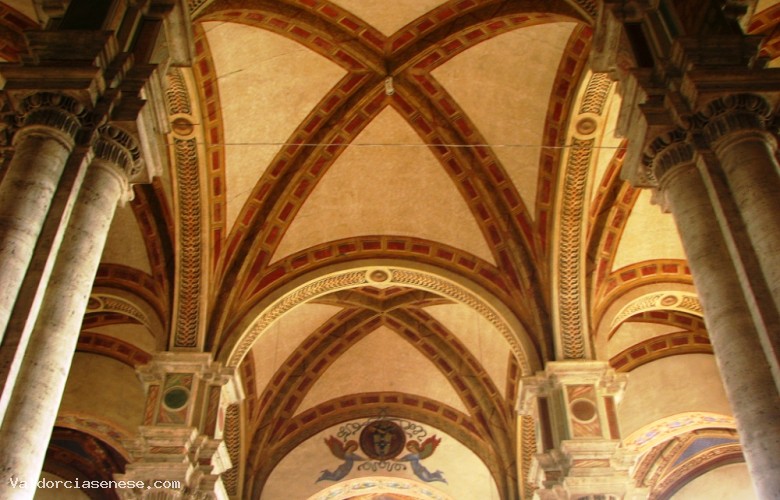

It was built by Rossellino in 1459. Dedicated to the Assumption, it was constructed on the ruins of the ancient Romanesque parish of Saint Mary. In order to have a large nave and a fairly large square, the apsis was anchored to the back of the hill, but not firmly enough to render it resistant on the unstable damp ground . As a matter of fact the restoring works on the sprone of the building that looks out on the countryside, have been very difficult and they’ve taken a long time. The exterior, clearly influenced by the architect Alberti, has a travertine facade, opened by three portals and divided in three sections by large pilasters flanked by two files of columns with a rose window and crowned by a tympanum with the code of arms of Pius II in the center. The bright interior, made up of three naves, similar in height, that Pius II had admired during his voyages in Northern Europe, links itself to Gothic motifs with the long and slender bundle pillars surmounted by tall imposts, on which stand the Gothic vaults. The ray apsis is lighted by the round windows, ornamented with thorny arabesque motifs. The bell tower with an octagonal plan, stands over the ancient crypt, it juts out on the left of the church and protrudes itself towards the sky ending with a beautiful gable. Among the artworks inside the Cathedral, we’d like to point out some altar panels, all similar in size and realized especially for the Cathedral , between 1461 and 1463, by some of the major Sienese artists of the time. The crypt houses sculpture fragments from the pre existing Romanesque Church of Saint Mary and a baptismal font by Rossellino’s shop.It was built by Rossellino in 1459. Dedicated to the Assumption, it was constructed on the ruins of the ancient Romanesque parish of Saint Mary. In order to have a large nave and a fairly large square, the apsis was anchored to the back of the hill, but not firmly enough to render it resistant on the unstable damp ground . As a matter of fact the restoring works on the sprone of the building that looks out on the countryside, have been very difficult and they’ve taken a long time. The exterior, clearly influenced by the architect Alberti, has a travertine facade, opened by three portals and divided in three sections by large pilasters flanked by two files of columns with a rose window and crowned by a tympanum with the code of arms of Pius II in the center. The bright interior, made up of three naves, similar in height, that Pius II had admired during his voyages in Northern Europe, links itself to Gothic motifs with the long and slender bundle pillars surmounted by tall imposts, on which stand the Gothic vaults. The ray apsis is lighted by the round windows, ornamented with thorny arabesque motifs. The bell tower with an octagonal plan, stands over the ancient crypt, it juts out on the left of the church and protrudes itself towards the sky ending with a beautiful gable. Among the artworks inside the Cathedral, we’d like to point out some altar panels, all similar in size and realized especially for the Cathedral , between 1461 and 1463, by some of the major Sienese artists of the time. The crypt houses sculpture fragments from the pre existing Romanesque Church of Saint Mary and a baptismal font by Rossellino’s shop.